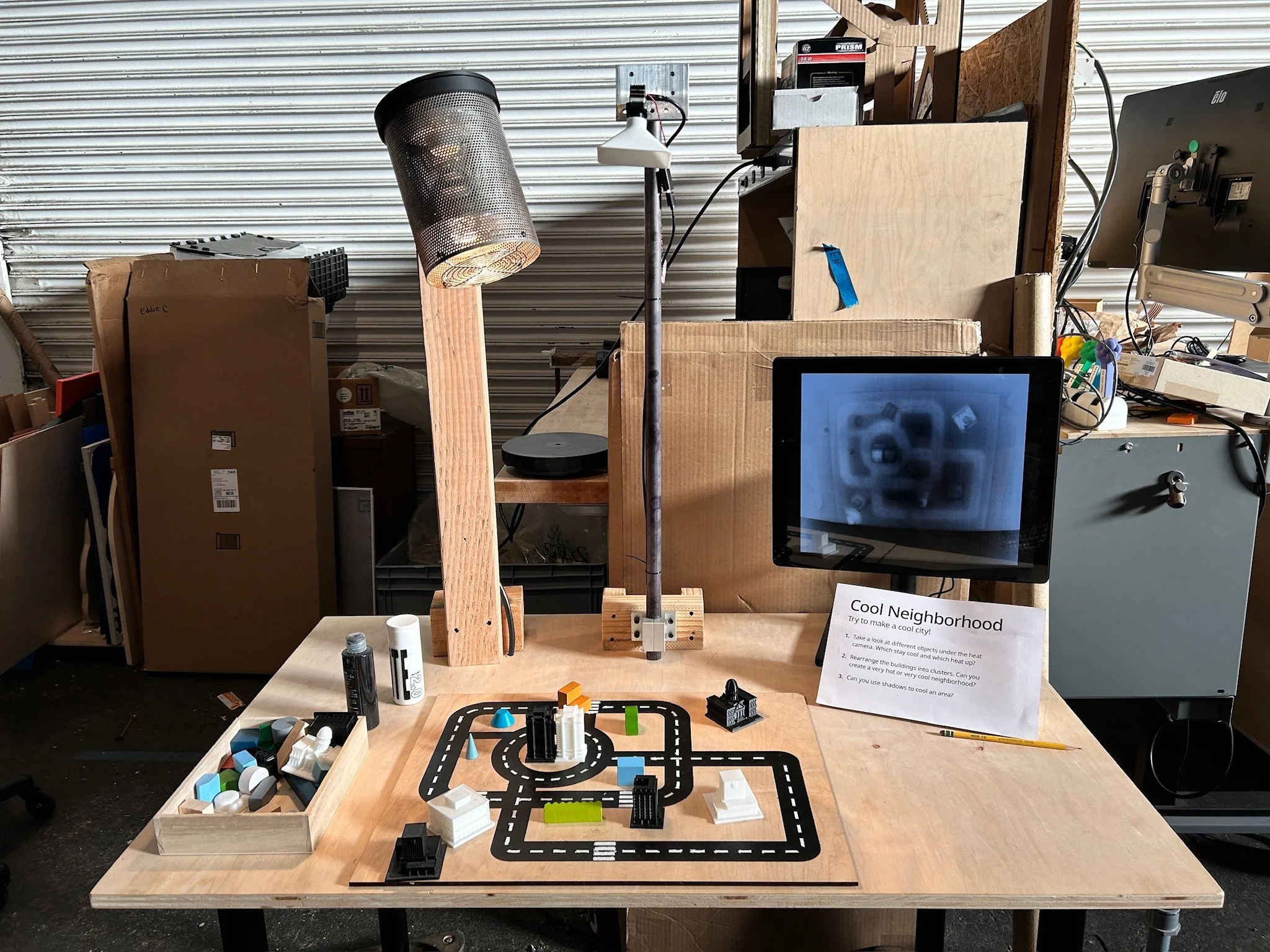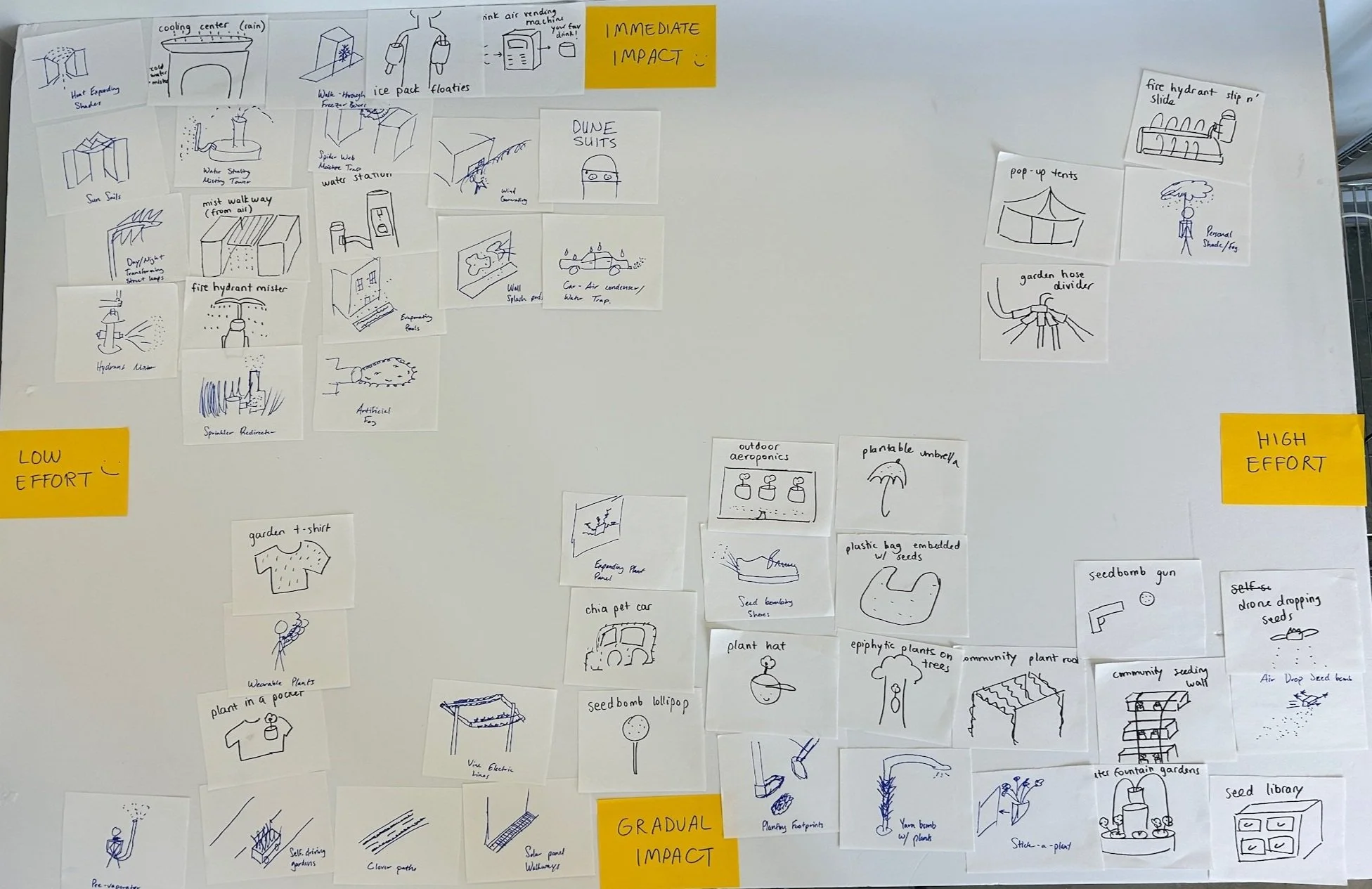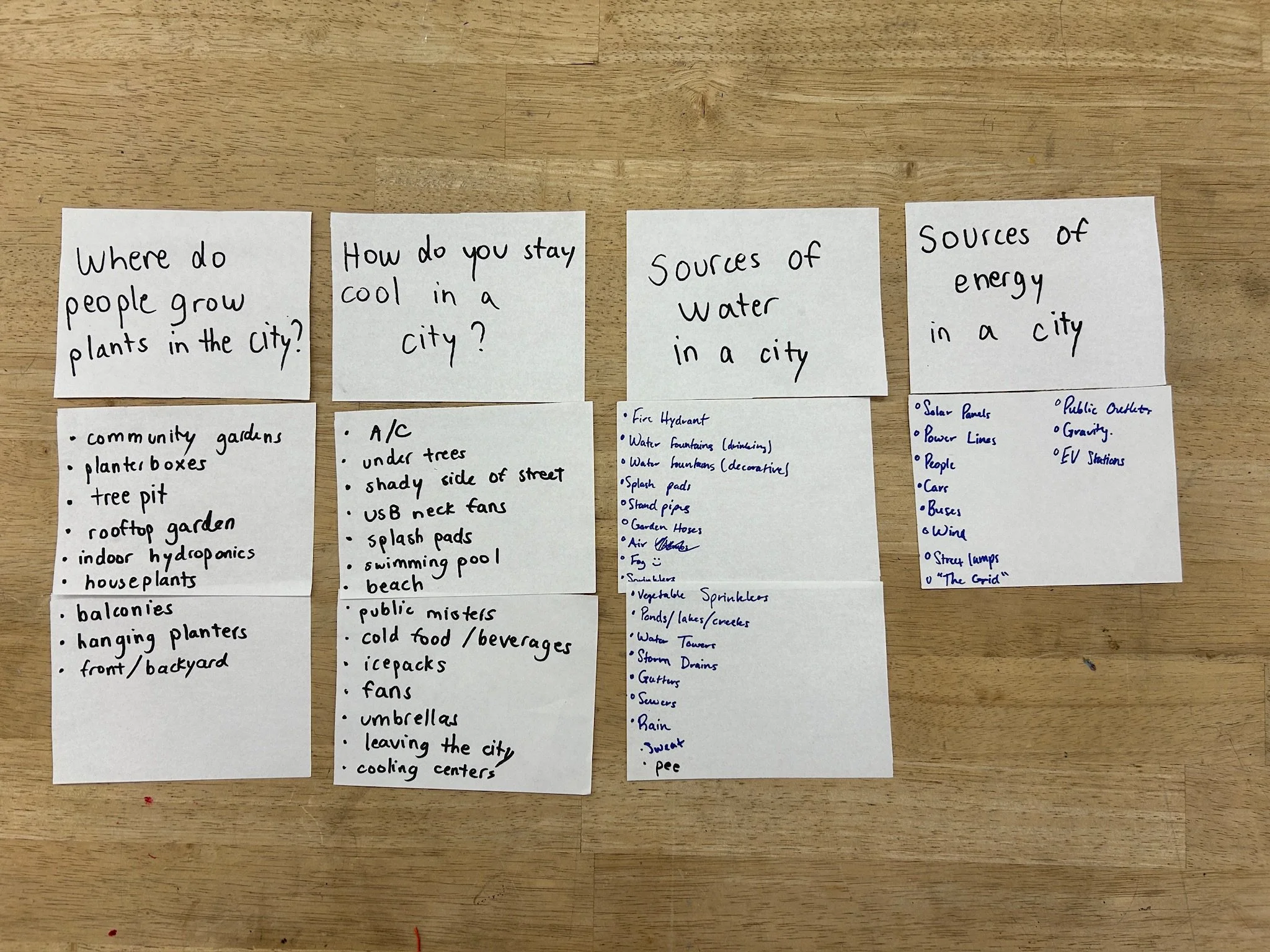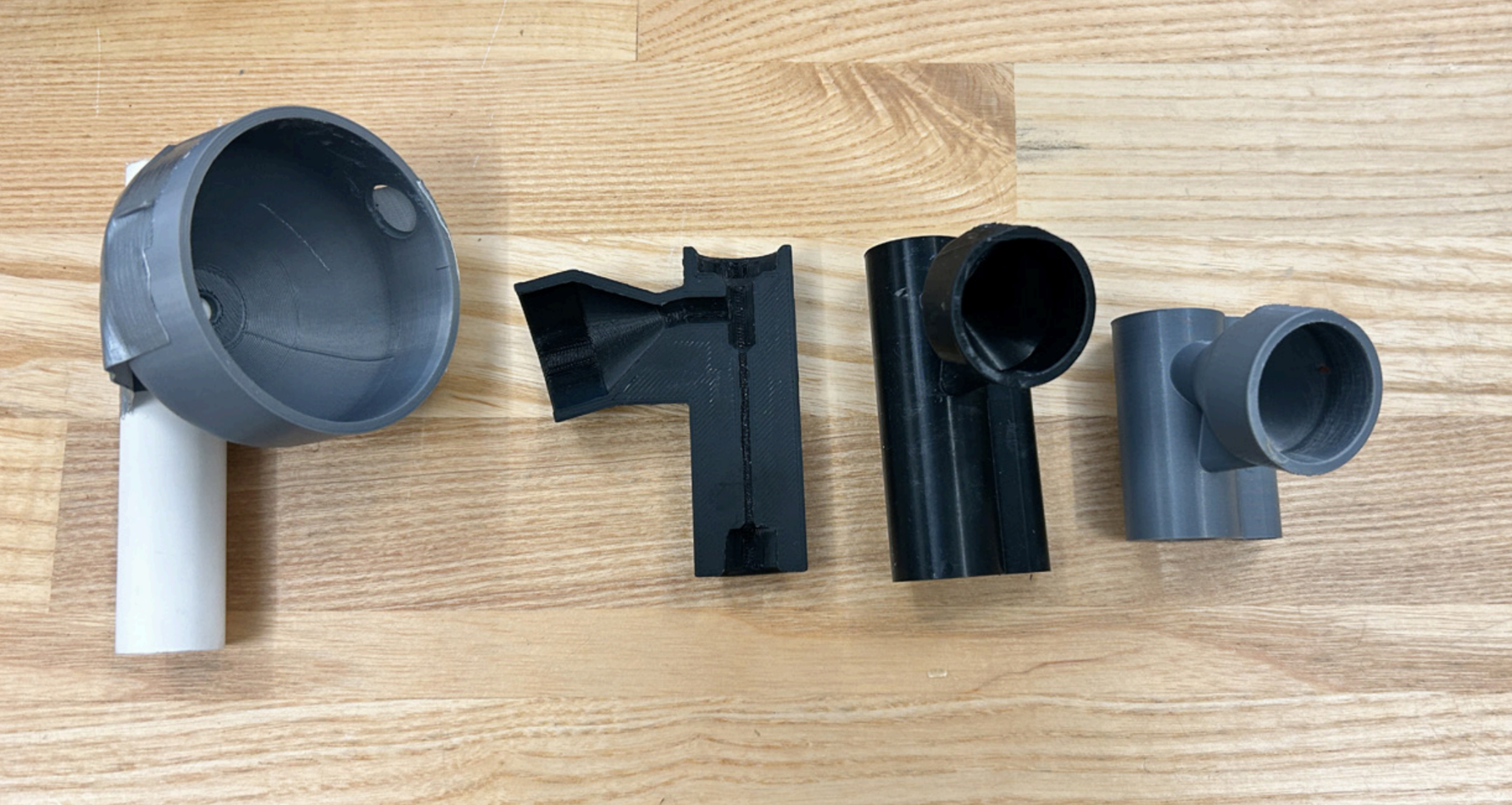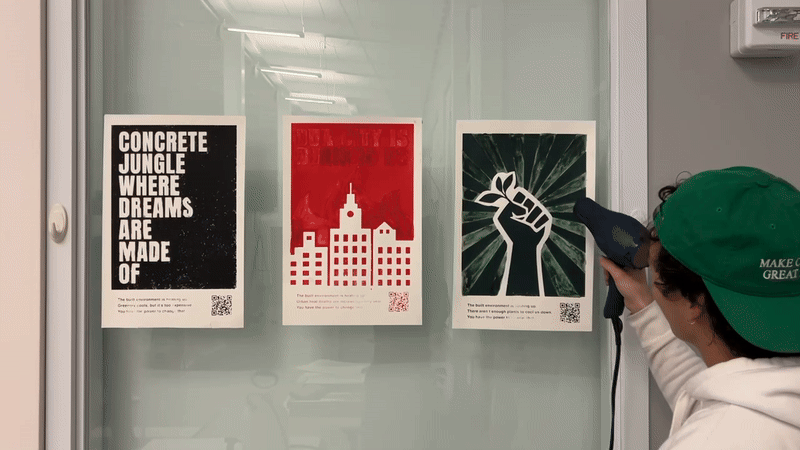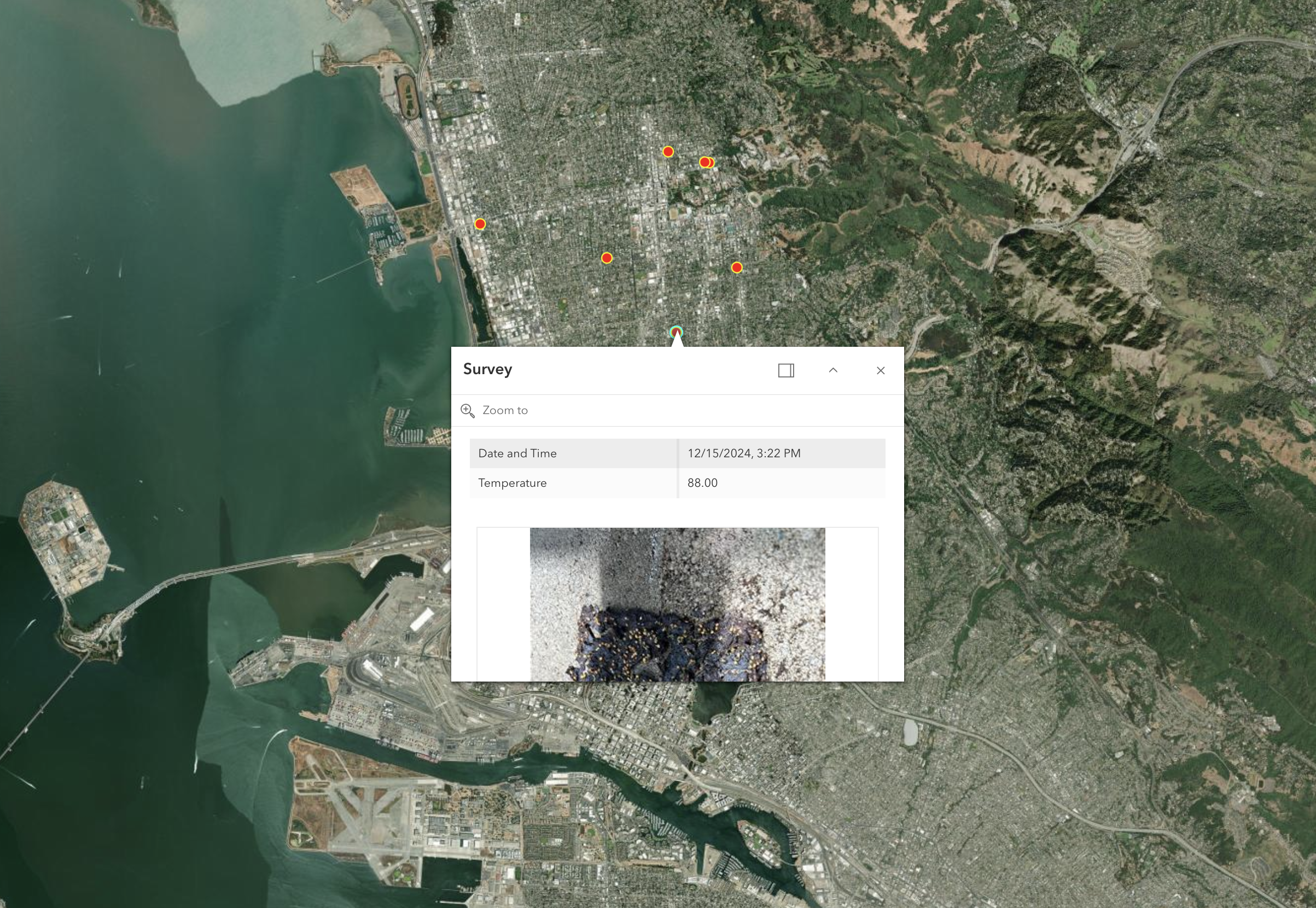
Fast Company World Changing Ideas 2025
Academic Excellence
Guerrilla Greening
A DIY, low-cost “plant graffiti” that retrofits the standard plant pesticide sprayer to empower communities to combat the Urban Heat Island effect and cool building surfaces.
CLASS
Berkeley Master of Design
Thesis Studio
TOOLS
3D Print Figma
Screenprint
ArcGIS
SKILLS
Research
Conceptualizing
Fabrication Visual Design
THE TEAM
Abigail Chen
Kirk Mendoza
TIMELINE
4 months
August - December 2024
Our “plant graffiti” uses an old Coke bottle full of sticky seed medium attached to a pump pesticide sprayer to spray onto walls
Background
Cities are getting hotter.
Urban areas trap heat. Concrete, asphalt, and brick absorb the sun’s energy and release it back into the air, raising local temperatures. With less greenery to cool things down, cities become Urban Heat Islands—hotter than surrounding rural areas. This heat worsens health risks, stresses energy systems, and fuels climate change.
Green gentrification.
The map below overlays surface temperatures with historic redlining grades from the Home Owners Loan Corporation (HOLC), which institutionalized racial discrimination in housing. It shows a clear pattern: areas rated “desirable,” like the Berkeley Hills, stay cooler. Areas marked “high-risk,” like Fruitvale, can be up to 20°F hotter.
The Urban Heat Island effect is not affecting residents equally, and change must come to equitably green our cities so that we can repair environmental injustices and provide healthier living to all.
Source: Grades of Heat
Fruitvale, a “high-risk” and historically redlined area is 20 degrees hotter than the Berkeley Hills, a “desirable” area
How might communities be encouraged to combat the Urban Heat Island effect and advance environmental justice through creative action?
Process
Focus Groups
We engaged in interviews and focus groups with community organizers, activists, climate exhibition designers, architects, and climate educators to understand urban heat, current solutions—from grassroots interventions to top-down city planning solutions—and their shortcomings.
Ideation
We ideated 30+ crazy ideas, aligning them against criteria like immediacy of impact, low to high effort, individual vs communal, cool vs uncool.
One idea stuck. Plants cool their surrounding areas through evapotranspiration. What if we could throw and grow plants onto walls, like graffiti?
Seed & Materials Tests
Plants start with seeds, and we would need the seeds to stick and grow on walls. We initially experimented with moss due to its resilience to sunlight and low water requirements. Despite testing on various surfaces like concrete and plywood over months, the moss failed to grow.
We pivoted to faster-growing microgreens. We tested a variety of microgreens (chia, cress..) in various sticky mediums (agar, growth nutrients..) on concrete and brick. Over a couple months and many many tests, the studio turned into an edible garden.
Prototyping & Testing
We decided to repurpose the pump pesticide sprayer as our vehicle of eco-civil disobedience, transforming an object of death into one of growth and hope.
The design process began with prototyping a spray nozzle that injects seed medium into a water stream, inspired by waterjet mechanics. Using 3D printing, we developed four nozzle prototypes, testing for spray strength, seed adhesion, and medium distribution.
Awareness Campaign
We often hear that the climate crisis is a communications problem. How might we clearly convey the urgency and importance of urban heating and its social issues?
We drew inspiration from Berkeley’s activist history, particularly the 1970s when UC Berkeley permitted students to turn the College of Environmental Design into a political poster mass production site that engaged students to screen print thousands of anti-war posters. From this, we designed screen-printed posters addressing themes of heating, greening, and inequity. We gathered reactions from the public, who described the posters as bold, powerful, and provocative.
Brand
Heat-Reactive
The posters are embedded with thermochromic ink, so that when the temperature of the surface rises over 88 degrees, the posters change their meaning and visual identity, showing frustrations with the heat.
Mapping
Citizen Science
The plant graffiti links to an online mapping platform that logs each deployment via a public form. This real-time map supports participatory monitoring and citizen science, empowering communities to track urban greening efforts and identify areas most affected by heat. It also fosters collaboration between residents, planners, and policymakers, turning civic action into data-driven advocacy for cooler, greener cities.
Outcome
We presented our project at a public showcase to over 100+ visitors, bringing greater awareness to this issue.
The project was also recognized as a Fast Company World Changing Idea 2025.






